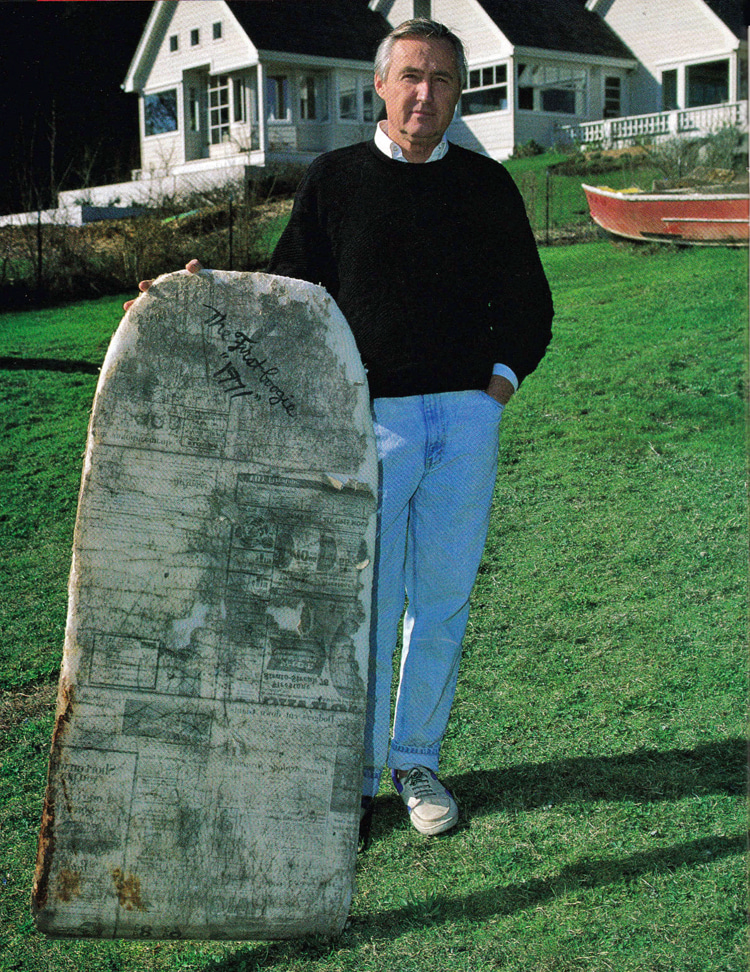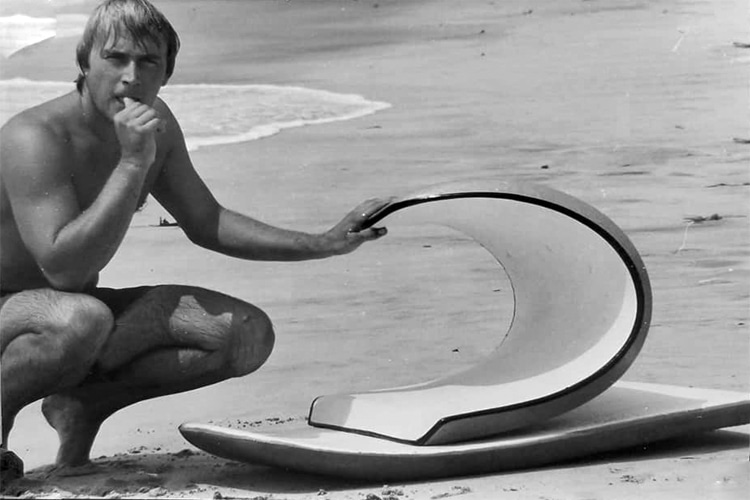On July 7, 2021, the bodyboard celebrates its 50th anniversary.
The boogie board is a revolutionary wave-riding craft that changed the way millions of people engaged for the first time with water sports.
Tom Morey created the world's first modern bodyboard on a summer morning of July 7, 1971.
After waking up early, he cut out a new shape from a nine-foot piece of soft, flexible foam.
Morey used his wife's iron and put down a sheet of the Honolulu Advertiser to stop the foam from melting.
The inventor ended up with a four-and-a-half-foot board featuring a square nose to hold on to and a sharp trailing edge to cut into the wave face.
It was time to test the boogie board, so Tom paddled out at Honels on Hawaii's Big Island.
After riding his first wave, Morey felt that there was something different and exhilarating about his creation.
"I could actually feel the wave through the board. I could feel everything," Tom Morey later revealed.
It's important to stress that the inventor of the bodyboard was already an accomplished surfer, so he knew the differences between standing up and riding prone.
Tom's wife - Marchia - was the second person to ride the world's first boogie board. And she was eight months pregnant.
The rest is history.

Tested at Pipeline
The board's first name was too complicated - S.N.A.K.E. (meaning Side Navel Arm Knee and Elbow) would not be commercially viable.
So, inspired by his passion for jazz, he adopted the term "boogie," a genre of blues music that was extremely popular in the late 1920s.
By the mid-1970s, Morey Boogie was already selling a bodyboard kit for thousands of water sports enthusiasts across America.
Several improvements and models were added to the collection of boards designed at the Morey Boogie factory in Carlsbad, California.
The bodyboard evolved and became hydrodynamically more efficient, more durable, lighter, and easier to ride in all types of conditions.
Eventually, the world's first bodyboarding stars started to emerge, and the need to crown champions and run events led to the establishment of a niche industry within surfing.
The bodyboard was put to the test at the mother of all waves - Pipeline - and did not disappoint.
Actually, bodyboarders began to realize that they could take off later and on steeper wave faces than regular shortboard surfers.
This technical ability sparked the first signs of animosity between both sports. And to make things even more intense, bodyboarders were able to stay deeper inside the barrel compared to their fellow stand-up surfers.
By the mid-1980s, bodyboarding was already a global sport with millions of recreational, amateur, and professional participants.
It's All Surfing
Some argue that Tom Morey's boogie board is just an updated version of the ancient paipo board.
But the truth is that the paipo board was different in shape and construction and never led to a different way of riding a wave. The bodyboard did.
Modern bodyboarders can launch themselves into the air like no one else.
One could also argue that the surfboard is an evolution of the paipo board, so it doesn't seem like a very valid and well-founded argument.
Tom Morey always stressed that boogie boarders and stand-up wave riders are all surfers. And he's probably right.
Legends never die, and neither does their legacy. The bodyboard hit 50 and is ready to reconquer the world anywhere a wave is breaking.
